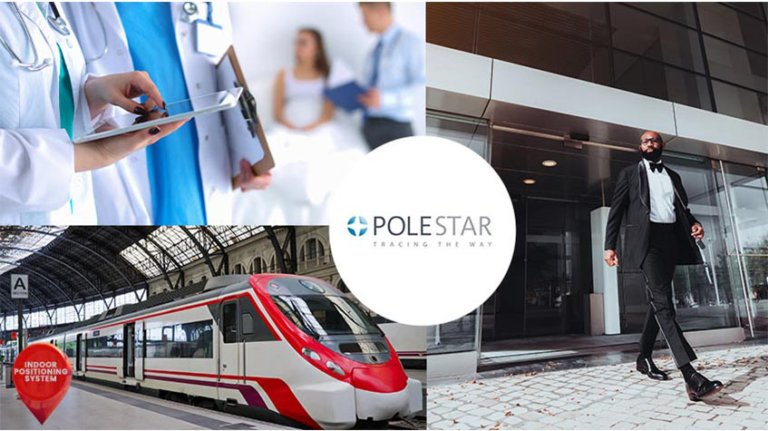



In the past, indoor positioning was mostly used in the transportation sector or for fleetmanagement, Today indoor location or IPS (Indoor Positioning System) is used in a very wide range of sectors and venues. Pole Star has designed the very first indoor positioning solution to meet all your challenges! Better operational performance, asset and people tracking, health crisis management, optimization of employee experience, visitor flow, workplace safety: whatever your needs or your business sector, our IPS (Indoor Positioning System) provides the most effective solutions.
Indoor positioning consists in accurately pinpointing the location of people or assets indoors where GPS is impaired. Indoor positioning usually works with Bluetooth Low Energy technology (BLE), but also with Wi-Fi or Ultra-Wide Band (UWB). Positioning technologies rely on lighter infrastructures and independent and/or connected beacons and antennas. Location is calculated by a software app on smartphone or by a server. Then, it can be displayed on an interactive map to calculate the itinerary, as well as for indoor navigation, position share; equipment, material or people search. Indoor positioning enables flow management, tracking of assets and people, improved safety, and navigation in any venue. Indoor positioning also generates good return on investment thanks to resource optimization, more efficient use of available spaces, elimination of time wasted looking for equipment, rooms, and patients, while reducing the amount of equipment needed.
Contrary to popular belief, indoor positioning systems aren’t only used for marketing purposes. Hospitals, airports, campuses, train stations, congress and exhibition centers are also using this technology to help visitors navigate these venues, guarantee their safety or track equipment (available rooms, equipment, manufactured goods, tools…) and locate people.
Did you know that one third of nurses spend 23 to 32% of their time handling equipmentinventory and looking for medical equipment?IPS based on tags attached to devices can pinpoint any type of equipment to the meter and in 3D (longitude, latitude and altitude). Your healthcare staff will be directly guided to the specific piece of equipment they are looking for medical equipment location via IPS helps limit equipment loss or theft.Therefore, IPS saves money in terms of equipment purchases in hospitals. Indoor Positioning Systems also help optimize patient flows and reduce overcrowded areas by keeping track of and guiding patients throughout their entire itinerary.As a result, IPS also reduces the number of missed appointments.
RTLS use in health sector
In industry, asset tracking has become increasingly critical with the digital revolution. It is essential to have Instant positioning of a shipped product, a component or manufacturing order. Indoor positioning meets this need providing real-time tracking of parts, orders, tools, and equipment. Thanks to NAO track, Pole Star provides industrial customers with dashboard and data analytics to help them optimize their processes and performances (improved inventory management, reduced inventory loss, faster turnaround times….). Uses of Indoor Positioning in Industry.
Uses of indoor positioning in industry
In large office buildings, indoor positioning can help people to find available working space areas, desks or meeting rooms and update in real time the availability status of these spaces. Combined with BMS (building management system), positioning data makes real-time space management easier and helps tailor work spaces to people’s needs.With a location-based app, employees can book a meeting room, while taking into account the position of their guests. Finally, when arriving in the morning at the flex office, employees can be directly guided to an available working space corresponding to their needs. IPS considerably improves employee experience at work. In a post-COVID context, moving around will be easier and overcrowded areas will be avoided (see NAO® Safe).
Companies are said to constitute 26% of COVID contamination clusters. To eliminate this risk and protect the safety of employees and visitors, Pole Star designed NAO® Safe to monitor the respect of social distancing and avoid spreading the virus. NAO Safe, particularly appropriate in a post-lockdown background, shows dangerous and sanitized areas on an interactive map. The system sends you a notification when : ● Social distancing isn’t respected● You have been in contact with a positive case●You exceeded a room’s capacity●You approach a space where one or several cases of COVID-19 were●You approach an area where close proximity is often observed
In 2018, more than 23.000 cases of violence in hospitals were recorded, and 90% of them came from patients or accompanying people. Pole Star’s positioning solution facilitates the implementation of a lone worker protection system. Whatever the sector, Indoor positioning yet again helps accurately location the person at risk, warns staff members in proximity while monitoring the situation in real time.
CONTACT US